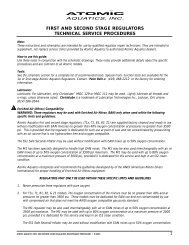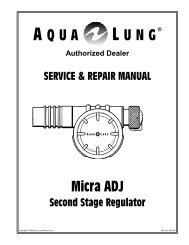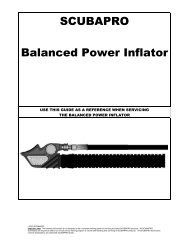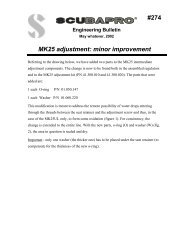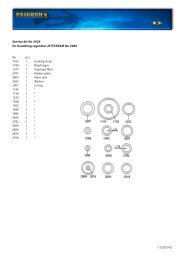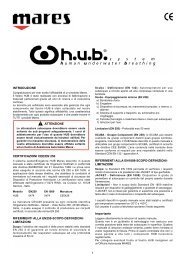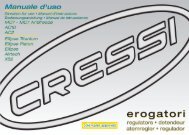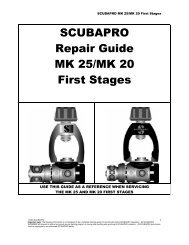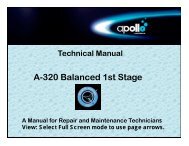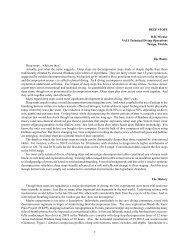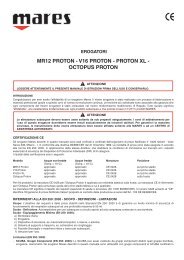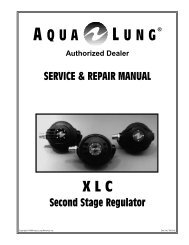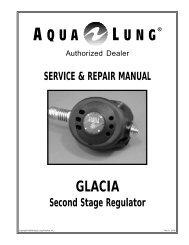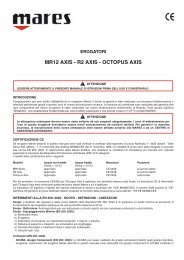Service & Repair Manual - Frogkick.dk
Service & Repair Manual - Frogkick.dk
Service & Repair Manual - Frogkick.dk
Create successful ePaper yourself
Turn your PDF publications into a flip-book with our unique Google optimized e-Paper software.
<strong>Service</strong> & <strong>Repair</strong> <strong>Manual</strong><br />
the HP seat, apply a short blast of low pressure air through the<br />
small hole to dislodge the HP seat(13). (See Fig. 7.) Discard the<br />
seat, and do not reuse.<br />
11. Resecure the first stage in the vise with the body positioned<br />
vertical, and the LP swivel facing up.<br />
12. Apply a spanner wrench to one of the larger bore holds of the<br />
piston cap(25), and hold it securely seated to turn the cap counter-clockwise<br />
to loosen it from the first stage body. (See Fig. 8.)<br />
Turn the piston cap further by hand to loosen and remove, until<br />
it can be carefully lifted straight off the body, along with the<br />
piston(22).<br />
13. Gently remove the piston from the piston cap, and then remove<br />
and discard the piston head O-ring(23). Set the piston aside<br />
with the shaft facing up, to be kept isolated from other metal<br />
parts or work surfaces that might damage the polished seating<br />
edge.<br />
14. Remove the high pressure valve spring(21) and spring isolator(20)<br />
from the body. Inspect the spring isolator for any signs<br />
of damage or distortion, and discard if any is found. Closely<br />
inspect the spring with a magnifier to check for any signs of<br />
damage or corrosion that has permeated the wall of the metal.<br />
Set the spring aside to be reused if it is determined to be in<br />
satisfactory condition with no signs of permanent corrosion or<br />
damage.<br />
CAUTION: If damage is found, or if the intermediate pressure<br />
was measured lower than 135PSI during preliminary<br />
inspection, replace the spring with new. DO NOT attempt to<br />
boost the intermediate pressure by adding spring isolators<br />
unless a new spring has first been installed.<br />
Fig. 6 – Removal of HP Static Oring<br />
Fig. 7 – Removal of HP Seat<br />
NOTE: If corrosion is found on the spring, check for any<br />
signs that moisture may have entered the first stage. If evidence<br />
of moisture is found inside the first stage, it is important<br />
to inspect all parts that could provide a possible leak path,<br />
either due to damage or improper assembly.<br />
15. Remove the first stage from the vise, and remove the vise<br />
mounting tool if one was used.<br />
16. Using a brass O-ring tool, remove the small dynamic O-ring(19)<br />
from the first stage body, being careful to avoid damaging the<br />
sealing surface of the internal groove.<br />
17. To remove the large external O-ring(15), pinch it between<br />
thumb and forefinger with one hand, and then apply an O-ring<br />
Fig. 8 – Loosening Piston Cap<br />
11 Copyright ©2011 XS Scuba



